Journal of Civil Engineering and Environmental Sciences
The natural bitumen additive Selenizza® SLN: A promising alternative for producing high-performance asphalt mixes
Edith Tartari*
Cite this as
Tartari E (2021) The natural bitumen additive Selenizza® SLN: A promising alternative for producing high-performance asphalt mixes. J Civil Eng Environ Sci 7(2): 034-043. DOI: 10.17352/2455-488X.000043Copyright
© 2021 Tartari E. This is an open-access article distributed under the terms of the Creative Commons Attribution License, which permits unrestricted use, distribution, and reproduction in any medium, provided the original author and source are credited.The purpose of this paper is to highlight the benefits of using natural bitumen in the context of global environmental change and increasing transportation demands in terms of traffic volume and loads. Despite the advantages of using these additives as binder modifiers to implement high modulus asphalt mixes characterized by high stiffness, high durability, superior resistance to permanent deformation, and good fatigue resistance, they remain still largely unknown and far from being effectively exploited. The paper displays for the first time a collection of scientific data based on previously published research works, enriched by new laboratory testing, whose results are not published yet. It aims to provide a comprehensive understanding of various aspects of the natural bitumen Selenizza® (extracted from the deposit located in southeast Albania) and the role that this natural additive plays in achieving the desired asphalt pavement performance. The dynamic rheological and Modulated Differential Scanning Calorimetry (MDSC) analysis proved that natural bitumens are fully compatible with straight-run bitumen and contribute to increasing the consistency, viscosity, and stability of natural bitumen-modified binders. The Rolling Thin-Film Oven Test (RTFOT), followed by Pressure Aging Vessel (PAV) aging analysis of road bitumen modified with Selenizza®, revealed that the resulting binders are resistant to aging and relatively efficient at low temperatures.
A Life Cycle Assessment study compared the environmental impact of the Albanian natural bitumen production process with that of conventional crude oil bitumen, leading to the conclusion that the CO2 emission released during the production of Selenizza® is reduced by approximately 44 % compared to that of crude oil bitumen. The various research works described in this paper provide evidence that the natural bitumen-based asphalt mixes feature enhanced quality in terms of mechanical and rheological properties compared to reference asphalt mixes produced with equivalent traditional paving grade bitumen.
Introduction
For a long time, the role and effectiveness of using bitumen as binder modifiers have been massively ignored and underestimated. There are several deposits of natural bitumen around the world and the relatively low price of natural bitumens compared to polymeric additives or other bitumen modifiers, represents a good opportunity to increase their industrial usage. It was not until relatively recently that several research works have been conducted to determine the chemical and physical properties of natural bitumens and examine the nature of the modifications induced by their addition on petroleum bitumen, as an attractive alternative to manufacture high modulus asphalt mixes [1]. The author, through a comprehensive approach based on research data, endeavours to provide for the first time an accurate description of bituminous binders modified with the Albanian natural bitumen Selenizza®. A series of tests were carried out by the University of Rome “LA SAPIENZA” on straight-run bitumen samples modified with different types of natural bitumen. The tests used rheological and thermal techniques and revealed that the modified bitumens are compatible with petroleum bitumen. The nature of modifications is similar to the introduction of chemical additives [2]. In parallel, the Western Research Institute (WRI) conducted a research study using a Superpave performance grading PG system to examine the characteristics of a PG 64-22 bitumen modified with 10 % Gilsonite® and Selenizza® [3]. The chemical properties of the resulting binders were evaluated via Saturates Aromatics Resins and Asphaltene Determinator (SAR-AD) and their physical properties were determined via Dynamic Shear Rheometry (DSR). Another research work carried out at the University of Strasbourg France focused particularly on the potential of using the natural bitumen Selenizza® to produce hard bituminous binders and high modulus asphalt mixes [4]. Among others, this study investigated the aging behavior of a 50/70 bitumen modified with different percentages of Selenizza®, compared to respective equivalent penetration grade standard bitumen, submitted to accelerated artificial RTFOT, followed by PAV aging. The study revealed that high modulus asphalt mixes could be produced with binders from conventional soft grade bitumen by adding natural bitumen. Two ways of feeding natural bitumen into the asphalt mixture were adopted, using the dry process, where Selenizza’s powder/granules, were added to aggregates and bitumen in the mixer and the wet process, where the modified bitumen (base bitumen pre-blended with Selenizza®) was added to aggregates in the mixer. Gyratory Shear Compactor (PCG), complex modulus, and Two-Point Bending tests were carried out for the design optimization of asphalt mixtures. Fatigue behavior was evaluated for different mixtures and Uniaxial Tensile Strength tests (UTS) and Thermal Stress Restrained Specimen Tests (TSRST), were conducted to evaluate asphalt mixtures behavior at low temperatures. Finally, within a framework of energy-saving and respect for the environment, a Life Cycle Assessment (LCA) study analysed and compared for the first time, the natural bitumen production cycle in the mine of Selenice (Albania), with the different stages of conventional bitumen production from crude oil in refineries [5]. The results of these studies demonstrate that Selenizza® improves the performances of the modified binder at high temperatures while maintaining good resistance at low temperatures, giving rise to improvement of the Useful Temperature Interval (UTI) of the binder.
Characteristics of albanian natural bitumen
The principal characteristics of the Albanian natural bitumen Selenizza® and its contribution to the production of hard bituminous binders and high modulus asphalt mixes HMA, has been evaluated as a part of a thesis research submitted to the Department of Mechanical and Civil Engineering at the University of Strasbourg France [4]. The Albanian natural bitumen consists of a very complex mixture of hydrocarbons containing generally from 80-88% by weight carbon, 8-12% hydrogen and other hetero atoms such as sulphur, 1-9% wt. %, nitrogen 0-1,5% oxygen 0,5-1,5% and traces of elements such as vanadium and nickel.
Glass transition and crystallizable fractions
Typically, for bitumen, the glass transition temperature Tg ranges between -50 to -10°C. The Tg value is correlated to the mechanical behavior of bitumen at low temperatures. High values of Tg mean brittle behavior at low temperatures. Above the glass transition, the thermal effects are dominated by the fusion of crystallizable fractions which can be detrimental to the cracking resistance of bitumen, whose crystallization temperatures range between -10 to 60°C. Indeed, a previous research study has highlighted the fact that after an artificial aging process, an increase of crystallizable fractions by 0.5%-1.5% is observed [6].
From a physicochemical point of view, the organic phase of Selenizza is similar to petroleum bitumens. Its specificity is a high content of polar fractions (resins + asphaltenes), which gives it a glass transition at relatively high temperatures compared to petroleum bitumens and favors a better adhesion quality of bitumen with the mineral aggregates matter of aggregates [7]. In Table 1 below are shown the glass transition temperatures determined by Differential Scanning Calorimetry (DSC):
In this study, the mineral phase composition was determined using infrared spectroscopy. The percentage of mineral fines contained in the Albanian natural bitumen ranges between 15 to 20 %. They are composed of silicon dioxide (SiO2) and calcium carbonate (CaCO3) as well as various clay minerals.
In parallel, was analysed the glass transition evolution of a 50/70 standard bitumen modified with different percentages of Selenizza®. The results are shown in the Table 2 below:
It was observed that the addition of natural bitumen at moderated levels, doesn’t affect the glass transition of bitumen. It was even noted that the value of glass transition temperature of the 35/50 bitumen modified with natural bitumen Tg = -23,1°C, was lower compared to that of an equivalent 35/50 petroleum bitumen, whose glass temperature was found to be Tg = -19,3°C. This seems to indicate that the bitumen modified with natural bitumen, has increased resistance to low temperature cracking compared to petroleum bitumen of equivalent grade.
Anti-aging properties
A specimen of 50/70 bitumen, modified with different percentages of Selenizza®, as well as the respective equivalent penetration grade conventional bitumen, were submitted to accelerated artificial aging RTFOT followed by PAV. After the tests, the aged bitumen samples were submitted to different tests (penetration, R&BT, rheology, etc.) to evaluate the evolution of these parameters as a function of aging. The outcome of penetration and softening temperatures measurement, before and after artificial aging, are shown in Table 3.
The bitumen oxidation, which characterizes the state of its aging, has an important impact on the physicochemical and mechanical properties of the binder. It is reflected by a decrease in penetration values and an increase in the softening point temperatures. The evolution of penetrability and R&B temperature are presented respectively in Figures 1,2. The aging effect was quantified using the following mathematical expression:
Where: EVx: the evolution of mechanical property X; X RTFOT + PAV: mechanical property X after artificial aging RTFOT and PAV; X New: mechanical property X before artificial aging.
It was observed that after aging, the changes of modified bitumen were lower than the changes of initial bitumen 50/70. Also, for the modified specimens, the changes are attenuated with the increase of the modification rate. Last, and more importantly, by comparing the modified bitumen with the equivalent grade standard bitumen, it was found that the samples of modified bitumen are characterized by minor changes, which means that the modifying additive Selenizza®, acts as an aging inhibitor.
Similar conclusions were obtained from the analysis of the evolution of complex modulus and phase angle after RTFOT and PAV aging. The results, shown in Figures 3,4, correspond to a loading frequency of 10-4 rad/s at reference temperature Tref = 0°C. Other loading conditions gave equivalent results, and the same interpretations remain valid.
Low temperature properties
The low-temperature behavior of Selenizza® modified bitumen has also been the subject of a study conducted by researchers at Bern University of Applied Sciences using FRASS breaking point test according to the standard method SN 670 507 [8]. Samples of 50/70 base bitumen were modified, with 10, 20 and 30 % of Selenizza® additive (SLN), that contains inherently inorganic matter and in parallel, with the respective corresponding percentages of only the organic phase of Selenizza® (cleaned from the mineral filler in the laboratory), Table 4.
The testing results showed that the addition of natural bitumen slightly affects the FRAASS breaking point of base bitumen. With the increase in the modification rate, the modified bitumen becomes more fragile at low temperatures, and their temperature of FRAASS breaking point temperature increases (Figure 5).
The study indicated a difference between the low-temperature behavior of modified bitumen containing the mineral filler and the modified bitumen without inorganic matter. The bitumen with mineral filler exhibits a slightly better behavior with lower values of FRAASS breaking temperatures. On basis of these results, the presence of inorganic matter in Selenizza® seems to have a positive impact on the low-temperature behavior of modified bitumen. Another hypothesis that might explain these observations is the evaporation of light fractions (with beneficial effects for low-temperature cracking) during the extraction process of Selenizza’s organic phase under elevated temperatures and reduced pressures. However, it is worth noting that for the addition of limited percentages of natural bitumen (up to 20%), the low-temperature behavior of modified bitumen does not seem to be significantly affected. The FRAASS breaking point temperatures of petroleum base bitumens are comparable to those of modified bitumen (-14°C versus -15°C and -13°C).
Natural bitumens as modifiers of distillation bitumen: thermo-rheological characterization
Scientists from the University of Rome ‘’ LA SAPIENZA’’ using rheological and thermal techniques, studied the nature of changes that occur when modifying distillation bitumen with natural bitumens. Three of the most used types of natural asphalt were analyzed: Gilsonite® from Utah deposit (USA), the Albanian natural bitumen Selenizza® and the Trinidad Lake Asphalt (Central America) [2]. To investigate the nature of the modification, 10% (in weight) of each natural bitumen was added to a standard penetration grade bitumen Gach Saran 80-100 and mixed at a minimum temperature of 150-180°C to guarantee the complete solubility. On Table 5 are reported the principal characteristics of the three natural asphalts under study
In the case of bitumen Gach Saran, referring to the reversing heat flow of MDSC analysis, which among other transitions, reveals vitreous transitions and softening values, there were identified three sections of temperature range separating different reversing trend:
- -50°C to 0°C (cold zone), with a series of vitreous transitions.
- -0°C to 20°C (around 0°C zone), with endothermic effects of the fusion of paraffin.
- +20°C to + 160°C (heat zone), with softening of bitumen, in two different phases, 55.8°C (typically maltenic) and 67.8°C (typically asphaltenic)
Effect on viscoelastic properties at high and low temperatures
The modification of bitumen Gach Saran by the addition of natural bitumens, resulted in all cases in an increase of softening point and a decrease of the penetration, as expected. A proportional relationship is observed between the percentage of asphaltens in each natural bitumen, and the respective values of the samples softening point. Such correlation suggests that the behavior of the analyzed samples in medium and high temperatures, the softening point of which represents the lower limit, regardless of the quality of the natural additive (inorganic component), depends exclusively on the asphaltene content (Table 6).
The dynamic rheological analysis showed that the rheological behavior of the modified bitumen, for medium and high temperatures (50 ÷ 160°C), is not a function of the modifier quality and depends exclusively on the asphaltenes content. As can be seen in Figure 6, the viscosity values of the modified bitumen increase, and the viscosity curves shift upwards, but their shape and slope remain unchanged and parallel to one another, for all sample types. This means that the modifiers do not affect the internal interactions between the asphaltene components in the modified bitumen, a typical phenomenon for the compatible additives.
For medium-low temperatures (-10 ÷ 60°C), the rheological modifications are more complex and differentiated. The observed modifications in the viscoelastic behavior and ductility of the mixed samples, obtained from the master curves at 20°C and 60°C, were dependent on the quality of the natural bitumen (the bituminous component as well as the inorganic matter, which in this case, impart modified sample rigidifying properties and may perform the function of filler, decisive for the product performance). At T=20°, an inversion of the zero shear viscosity curves was observed, showing higher viscosity values for the specimens modified with natural bitumen with lower asphaltene content, namely Trinidad and Selenizza, compared to Gilsonite modified samples (with the highest asphaltene content). It can be concluded that the viscous behavior and the ductility of modified bitumen is affected principally from the quality of natural bitumen, from both bituminous, and inorganic phases (Figure 7).
Modulated Differential Scanning Calorimetry (MDSC) analysis
The MDSC analysis showed that the rheological behavior of the straight run bitumen, does not result particularly affected at low temperatures by the addition of natural bitumen, but it is significantly modified at hot temperatures. The comparison of softening temperatures (from the reversing curves Figure 8) between the original bitumen and modified samples indicates that the addition of natural bitumens Trinidad and Selenizza®, due to lower molar mass of their maltenic phases (with respect to those of reference bitumen), decrease the lower limit of reference bitumen softening range, with a dilution effect on it [9]. Thus, while the maltenic phase of base bitumen Gach Saran 80-100, begins to soften at 55.8°C, its mixture with Trinidad was observed to start softening at 45.9°C and that with Selenzza®, at even lower temperatures, inferior to 45.9°C. As regards Gilsonite®, it was observed that its addition does not influence the melting temperatures of different maltenic and asphaltenic phases but expands the softening range of the original bitumen to higher temperatures. The study findings demonstrated that the nature of changes induced by the addition of natural bitumens is ultimately determined by their composition, and more particularly, their asphaltene content. The modified bitumen is characterized by increased values of consistency, viscosity, and stability conferring to the asphalt mix, better resistance to permanent deformation.
Evaluation and comparison of chemical and physical properties of a conventional bitumen modified with Selenizza® and Gilsonite®
Recently, the Western Research Institute conducted a research study evaluating the chemical and physical properties of Selenizza® used as bitumen modifier in comparison with Gilsonite®. In this study, was assessed a conventional base bitumen PG 64-22 modified with respectively 10% Selenizza® and 10% Gilsonite® [3]. Long-term oxidation was applied on the base binder (PG 64-22) and the two blends, (PG 64-22 + 10% Gilsonite®) and (PG 64-22 + 10% Selenizza®). During the Rolling Thin Film Oven (RTFO) test according to the AASHTO T240, samples were heated at 163°C for 85 min in a forced draft oven. Then, the RTFO aged 3.2 mm thick samples, were further heated at 100°C and 2.1 MPa pressure for 20 hours using the Pressure Aging Vessel (PAV) standard procedure according to the AASHTO R28. Dynamic Shear Rheometry (DSR) measurements were made on three RTFO/PAV aged samples: base bitumen PG 64-22, base bitumen + 10% Selenizza® and base bitumen + 10% Gilsonite®.
Black space shows that all binders nearly overlay with similar shapes indicating they have similar stiffness and relaxation properties (Figure 9). Both modified bitumens are slightly more elastic above the 45° phase angle. Four-mm parallel plate DSR (4mm-DSR) was used, as a replacement for bending beam rheometer measurements, to determine the rheological behavior at low temperatures and to calculate the low temperature Paving Grade (PG). The test results from 4mm DSR adjusted to BBR are shown in Figure 10.
After PAV, Selenizza® alters the low-temperature m value by 3°C, S by 2°C and Δ TC by 0.2°C whilst Gilsonite®, alters the low temperature m value by 6°C, S by 5°C, and Δ TC by 0.2°C. The values of low-temperature cracking parameter Δ TC (> -5°C), show that the effect of both modifiers is marginal. The Glover-Rowe parameter, correlated with ductility at 5°C, indicates that the binder modified with Selenizza® lies over the crack warning of 180 kPa and the Gilsonite® blend, over the cracking limit of 600 kPa (empirically established limits, considered as thresholds for fatigue cracking resistance).
The high and middle-temperature rheological analysis led to the conclusion that compared to PG 64-22 base bitumen (Figure 11), Selenizza® raises high-temperature PG of the blend by 6°C, intermediate temperature by 3°C, and crossover temperature by 5°C. Gilsonite® raises high-temperature PG of the blend by 14°C, intermediate temperature by 7°C, and crossover temperature by 9°C.
The performance grading of the two blends resulting from DSR outcomes are shown in the Table 7.
Selenizza® increased continuous upper PG by 6°C, and decreased lower PG by 3°C, with a UTI improvement of 3°C. Gilsonite® increased continuous upper PG by 14°C, and decreased lower PG by 6°C, with a UTI improvement of 8°C.
Considering that SARA fractions are very sensitive to aging, particularly long term aging and indicative of possible field performance issues, Automated Saturated Aromatics Resins and Asphaltene Determinator (SAR-AD) was used to determine the fraction composition of 5 samples: unaged Selenizza®, unaged Gilsonite®, RFTO/PAV aged base binder, RFTO/PAV aged base binder + 10% Selenizza® and RFTO/PAV aged base binder + 10% Gilsonite®.
It resulted that both Selenizza® and Gilsonite® present similarities with very little content of saturates (≈1%) and 1 ring aromatics (ARO1), and a high percentage of toluene asphaltenes. In turn, compared to Gilsonite®, Selenizza® has more 2-3 ring (ARO2) and 3-4 ring (ARO3) aromatics, fewer resins, and cyclohexane soluble asphaltenes, and slightly more toluene asphaltenes (Figure 12).
SAR-AD analysis on the PAV aged, modified samples, resulted in similar Saturates and Aromatic (Aro1, Aro2, and Aro3) trends between aged base bitumen and modified binders, showing little effect of the modifiers on the base bitumen for these fractions. PAV aged Selenizza® blend is close in composition to the unmodified PAV 64-22 and has fewer toluene soluble asphaltenes than Gilsonite® blend, which is unexpected as pure Selenizza® has more toluene asphaltenes than Gilsonite®. RTFO/PAV aging of PG 64-22 increases asphaltenes by 2.4% (Table 8). RTFO/PAV aged Selenizza® blend has fewer asphaltenes than predicted by blending rule based on 90% aged PG 64-22 and 10% unaged Selenizza® (18.4 vs. 20.2%) whereas the aged Gilsonite® blend has similar asphaltenes vs. predicted (19.6 vs. 19.7%). These results indicate that aged Selenizza® should be more stable from an asphaltene peptization standpoint. Also, the colloidal instability index (CII) values are in line with this observation, showing that the Selenizza® blend is slightly less stable (CII=0.48) than unmodified bitumen PG 64-22 (CII=0.45) and slightly more stable than the Gilsonite® blend. It was also observed that after the PAV aging, the Selenizza® blend contains fewer toluene asphaltenes than the Gilsonite® blend, and fewer than predicted by the blending rule, and, slightly lower colloidal instability index. This may be due to better (lower) aging propensity of Selenizza® blend compared to Gilsonite® blend or better compatibility (peptizability) of Selenizza® asphaltenes in the aged bitumen.
Production of high modulus asphalt mixes using Selenizza®
High Modulus Asphalt Concrete (HMAC) are considered as one of the important solutions for failures encountered in conventional Hot Mix Asphalt, such as fatigue cracking and permanent deformation. The HMAC mixture design method, compared to traditional Asphalt Mixtures, consists in using hard grade bitumen, higher binder content, high stiffness, and lower porosity. Its use has been adopted by many countries for the implementation of long-life asphalt pavements. In this context, the research study conducted by the University of Strasbourg [4], examined the potentiality of producing hard binders from soft petroleum bitumen modified by the addition of Selenizza®, as an alternative to hard grade bitumen derived from crude oil refining. Various HMAC formulas with different percentages of Selenizza® were compared between them and with a reference HMAC, in terms of complex modulus, fatigue behavior, and low temperature cracking tests (tensile strength, thermal stress restrained specimen tests). A reference HMAC was manufactured with a petroleum hard binder 20/30 and was compared with two HMAC specimens with equivalent grade binder obtained by mixing paving bitumen 50/70 with Selenizza®, in two different ways, previously modifying the bitumen, or by introducing it directly to the mixer. It was observed that the way of introducing Selenizza® has no significant impact on the linear viscoelastic properties of HMAC asphalt mixture. The study showed that the mixture produced with petroleum bitumen 20/30 was more rigid than the mixtures manufactured with natural bitumen (Table 9). This is explained by the fact that the petroleum bitumen 20/30 evolves more quickly during the manufacturing process, which is consistent with the previous results obtained by RFTOT aging tests on bitumen.
The results of fatigue tests are shown in Figure 13.
The fatigue lines appear to indicate that asphalt mixtures with Selenizza® are more performing at high-stress levels compared to the reference mixture based on petroleum bitumen, which, in its turn, yields better results at the low-stress range. However, statistically, no significant differences were found between the investigated asphalt mixtures.
To evaluate asphalt mixtures behavior at low temperature, Uniaxial Tensile Strength tests (UTS) were carried out on asphalt mixes at -20°C, -10°C, 5°C, and 20°C. The results shown in Figure 14, indicate that the asphalt mixes produced with Selenizza®, exhibit higher resistance to low temperature cracking compared to the reference asphalt mix obtained with petroleum bitumen (at 5°C, for EME-02, a tensile strength of 6,06 MPa versus 4,87 MPa for EME-01).
Also, it was observed that the corresponding tensile failure strain values (Figure 15), indicate a greater ductility for asphalt mixes using Selenizza® additive with, for example, a tensile failure strain value at 5°C, of 1,625 ‰ for EME-02 versus 0,528 ‰ for EME-01.
The results of thermal stress restrained specimen tests (TSRST), shown in Table 10 below, indicated that the asphalt mixtures with Selenizza® are less thermo-rigid and yield better performance at low temperatures compared to the reference asphalt mix with petroleum bitumen (≈ 4,5°C lower).
Environmental impact assessment
In the framework of the increasing susceptibility to environmental issues, a research project was carried out in cooperation between the University of Rome “La Sapienza” and the company Selenice Bitumi, examining the various stages of the production process of the Albanian natural bitumen Selenizza® and comparing them with different steps necessary to produce conventional bitumen from crude oil, in terms of energy consumption and CO2 emission, for each kind of product [5].
The study was based on the guidelines of the environmental assessments according to the European standard such as Life Cycle Assessment (LCA) and Life Cycle Inventory (LCI) on the bitumen produced in crude oil refineries [10]. The study evaluated the whole chain of bitumen production in the refinery, from the extraction, up to the end- product, ready to be marketed, exploiting data emanating from studies and experiences of Italian and international associations such as SITEB, EUROBITUME, CONCAWE, EAPA and AEMA.
In parallel, the entire production cycle of the natural bitumen in the mine of Selenice and its industrial units was analysed. The manufacturing process of Selenizza®, composed of four main phases, extraction, transport, processing, and grinding& storage, is much simpler compared with the refinery production cycle, thus having an immediate impact on the reduction of energy consumption. Moreover, the transport costs are reduced to the minimum due to the proximity of the quarry site to the processing unit. The Selenice quarry site produces both the raw material (i.e. the natural bitumen) and the fuel (bituminous coal), which is used in the heaters to produce purified bitumen.
The data on the amount of CO2 emissions per kWh of electricity produced were collected from the International Energy Agency (IEA), and the calorific value of fuels used during the production process, i.e., the amount of CO2 emissions per kg of fuel burned, were acquired from international literature and ENI (Italian State Hydrocarbons Authority) data bank [11,12]. The results are shown in Tables 11,12.
This study revealed that the production process of Selenizza®, a naturally occurring bitumen, allows substantial energy saving (2,376 versus 4,71 MJ/t, i.e., about 50% of the value of the bitumen produced from crude oil) and a significant reduction in CO2 emissions, up to 44% (127,3 kg versus 226,2 kg per ton of conventional bitumen production) Figure 16.
Conclusion
This paper provides a survey of the main results of research studies and laboratory tests carried out recently on the efficiency of natural bitumens, focusing especially on Albanian natural bitumen Selenizza®, to modify conventional road paving bitumen. The addition of natural bitumens strongly affects the mechanical behavior of modified bitumen. It was demonstrated that Selenizza® decreases the susceptibility to aging of modified bitumen as the percentage of natural bitumen content increases. Also, for equivalent penetration grades, crude oil bitumen mixed with Selenizza®, result in higher resistance to aging compared to traditional road bitumen. Based on observations, it seems that the modification of road bitumen induced by Selenizza®, does not correspond to the simple addition of Selenizza’s molecules to those of base bitumen, but to a reorganization of the molecular structure of the latter, which may be explained by the breaking of intermolecular bonds of large agglomerates in natural bitumen, followed by one recombination with smaller structures, creating intermediary size structures that lead to new equilibrium conditions. The MDSC analysis showed that the maltenic phases of base bitumen Gach Saran 80-100 modified with Trinidad and Selenizza®, start to soften at lower temperatures compared to original bitumen, providing an advantage to paving mixes workability. The HMAC produced with binders from conventional soft grade bitumen modified with natural bitumen Selenizza® have improved water stability, better rutting resistance, good fatigue resistance, and relatively good low temperature cracking resistance (compared to mixtures using conventional binders with equivalent penetration grade). These studies, supported by numerous concrete examples of using the eco-friendly additive Selenizza® in several construction projects [13-18], demonstrate that high-temperature performance, modulus, and fatigue resistance properties HMAC can be produced with binders from any conventional soft grade base bitumen modified with natural bitumen, while maintaining good resistance at low temperatures adapted also to regions with a continental climate, subject to significant temperature fluctuations.
Current efforts are focusing on the development of new types of binders combining the high performance mechanical and durability properties of Selenizza® with the rejuvenating capability of waste vegetable oils, whose Aromatics, Resins and Saturates fractions contents, are relatively close to those of petroleum bitumen [18]. The need for such an approach derives from the fact that the quality of bitumen obtained from refineries, fluctuates depending on the crude oil source and refining process. The road bitumen though meeting the existing specifications, are often inadequate and do not give the required in service performance under heavy traffic and environmental conditions thus indicating deficiencies in the specifications itself. The engineering properties of the new produced binders were close to a P 35/50 standard petroleum bitumen, but with the particularity that the softening temperatures of the new binder are higher than those of the conventional bitumen [19].
Research endeavours are also being undertaken, in a completely different perspective, to produce a rejuvenating agent composed of vegetable oil and natural bitumen Selenizza® (by reversing the ratio of components as opposed to the preceding case) which enables the production of a new HMA mixture incorporating 100% RAP aggregates [20]. The new developed rejuvenator, aims to restore the rheological properties helping to rebalance the composition of aged binder that has lost its maltenes during the asphalt mix manufacture process and its service period, and restores the original characteristics of the fresh bitumen and its effectiveness.
The future challenges in this area are the production of compounds composed of natural bitumen Selenizza and polymers to maximize the technical benefits [21] of both materials in a more cost-effective solution to achieve the desired grade of binder, as well as the development of additives combining the natural bitumen and crumb rubber for the design of rut and moisture resistant Stone Matrix Asphalt (SMA) mixtures and low noise pavement surfaces.
- Hu C, Mai Y, Cannone Falchetto A, Tartari E (2021) Experimental investigation on the use of Selenice natural bitumen as an additive for pavement materials. Materials 14: 1023. Link: https://bit.ly/3rI9Yuk
- Santarelli ML, Scarsella M (2005) Natural asphalts as modifiers of distillation bitumen: thermo-rheological characterization. Rassegna del Bitume 21-29.
- Boysen R, Planche JP (2019) Selenizza® - Blending Study. Western Research Insitute.
- Themeli A (2015) Etude du potentiel d’emploi des bitumes naturels dans la production des liants bitumineux durs et des enrobés à module élevé. Thèse. Link: https://bit.ly/3drL61J
- Giavarini C, Pellegrini A (2012) The Life Cycle Assessment of Selenice natural asphalt. Rassegna del bitume. 47-52.
- Guern ML, Chailleux E, Farcas F, Dreessen S, Mabille I (2010) Physico-chemical analysis of five hard bitumens : Identification of chemical species and molecular organization before and after artifical aging. Fuel 89: 3330-3339. Link: https://bit.ly/3lGu9VG
- Tachon N (2008) Nouveaux types de liants routiers à hautes performances, à teneur en bitume réduite par addition de produits organiques issus des agroressources (PhD thesis). Institut National Polytechnique de Toulouse, Ecole doctorale Sciences de la Matière. Link: https://bit.ly/3pATQYW
- Themeli A, Bueche N (2019) Influence de la Selenizza sur le comportement à basse température des liants bitumineux. Berner Fachhochschule. Institut fűr Siedlungsentwicklung und Infrastruktur.
- Lesueur D, Planche JP, Dumas P (2000) Bulletin des laboratoires des Ponts et Chaussées. 229: 3-11.
- EUROBITUME (2011) Life Cycle Inventory BITUMEN. Link: https://bit.ly/3DzQt9E
- IEA International Energy Agency 2012. Link: https://bit.ly/3ELCCyF
- ENI National Hydrocarbons 2012. Link: https://bit.ly/3GkqXHd
- Santagata E, Riviera PP, Dalmazzo D (2012) Performance-related characterization of bituminous binders and mixtures containing natural asphalt. Procedia – Social and Behavioral Sciences 53: 535-525. Link: https://bit.ly/3ItL9Iw
- Besomi D, Leroux C, Lichtsteiner F (2008) High performance asphalt mixes in the Swiss Canton Ticino. Rassegna del Bitume 58: 51-55.
- Picariello FA (2012) Example of Using Selenizza SLN 120 in The Asphalt Mixes Used in The OLIMPIA ODOS Project in Greece.
- Martin R (2008) Route actualité. Un EME qui fleure bon l’asphaltite, Route actualité 28-29.
- Giavarini C (2008) Le Havre Port 2000 – Conglomerati ad alto modulo per piattaforme container. Rassegna del Bitume 60/08.
- Sun Z, Yi Z, Huang Y, Feng D, Guo C (2016) Properties of asphalt binder modified bio-oil derived from waste cooking oil. Construction and Building Materials 102: 496-504. Link: https://bit.ly/3rIBeJo
- Somé SC, Pavoine A, Chailleux E (2016) Evolution of the potential use of waste sunflower and rapeseed oils-modified natural bitumen as binders for asphalt pavement design. International Journal of Pavement Research and Technology 9: 368-375. Link: https://bit.ly/3DvGRNf
- Steffen R, Sorge R (2017) Juvenate: The innovative contract on asphalt production. Research Institute FH-Erfurt Project AiF.
- Tartari E (2019) Albania: the black gold of a near but also far country. Rassegna del Bitume 91/19, 19-25.
Article Alerts
Subscribe to our articles alerts and stay tuned.
 This work is licensed under a Creative Commons Attribution 4.0 International License.
This work is licensed under a Creative Commons Attribution 4.0 International License.
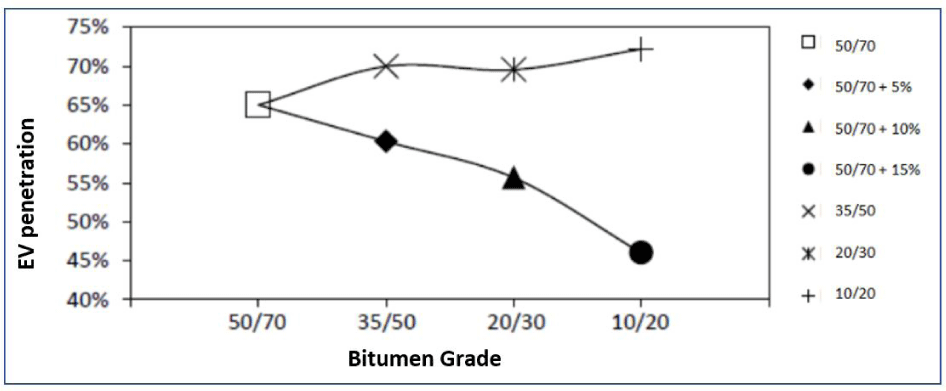

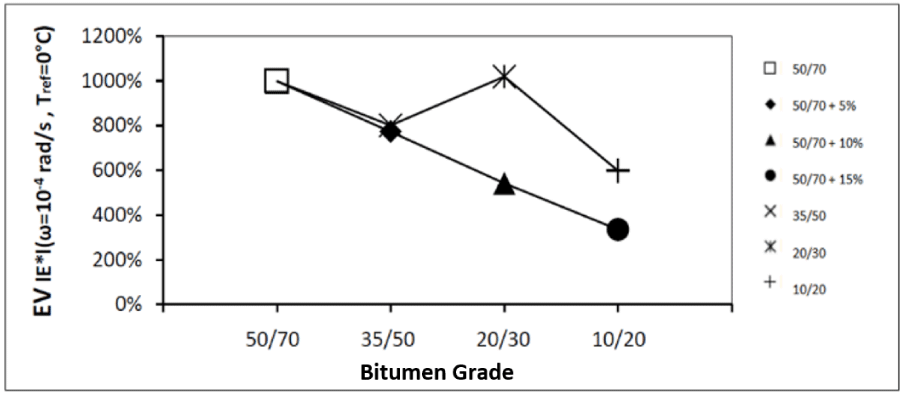
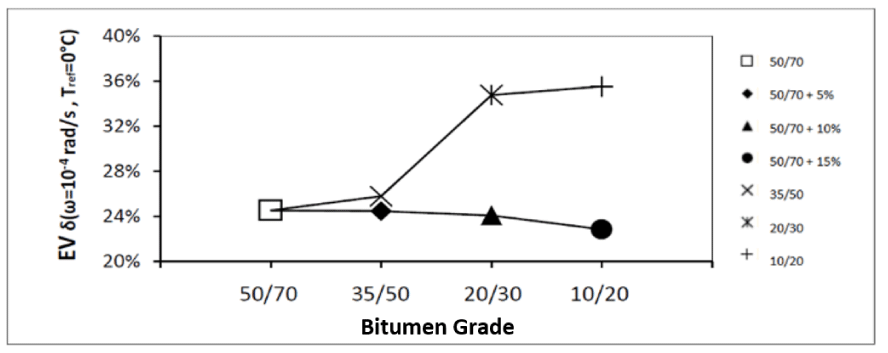
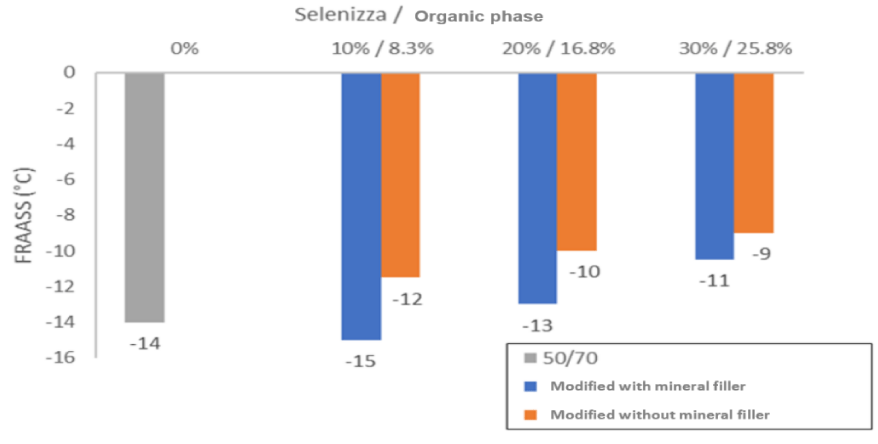
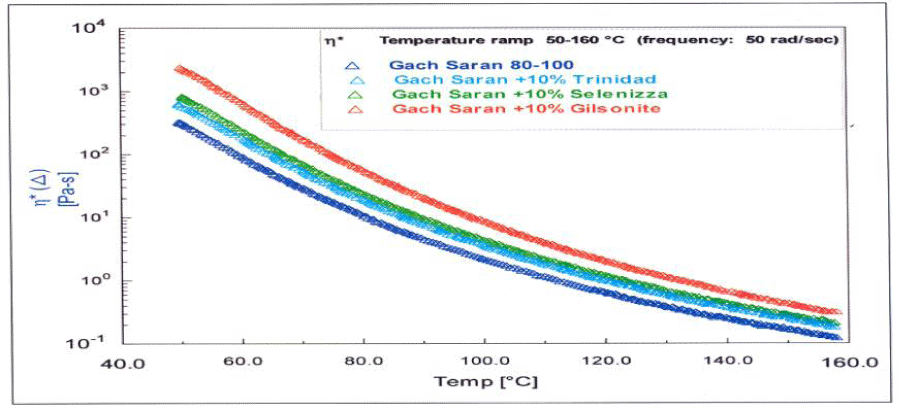
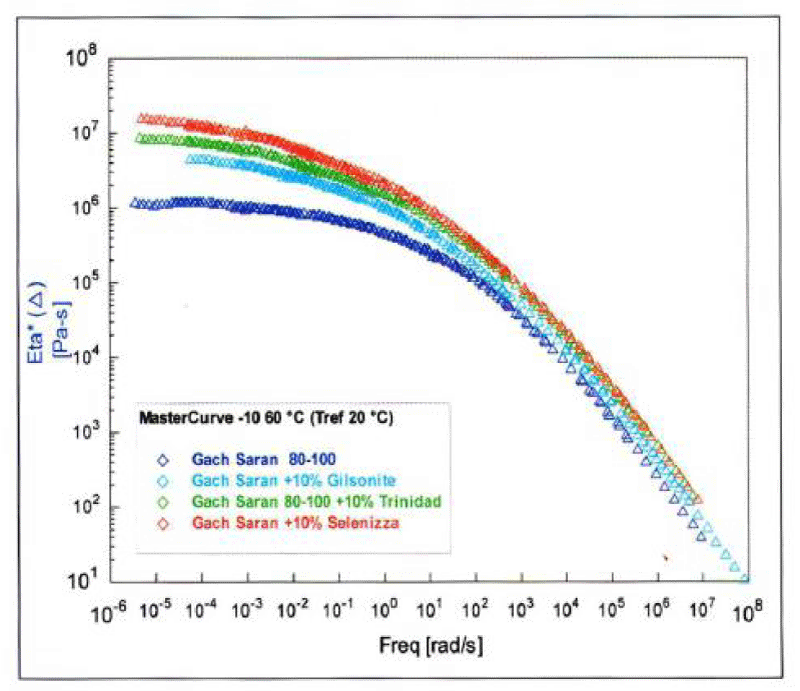
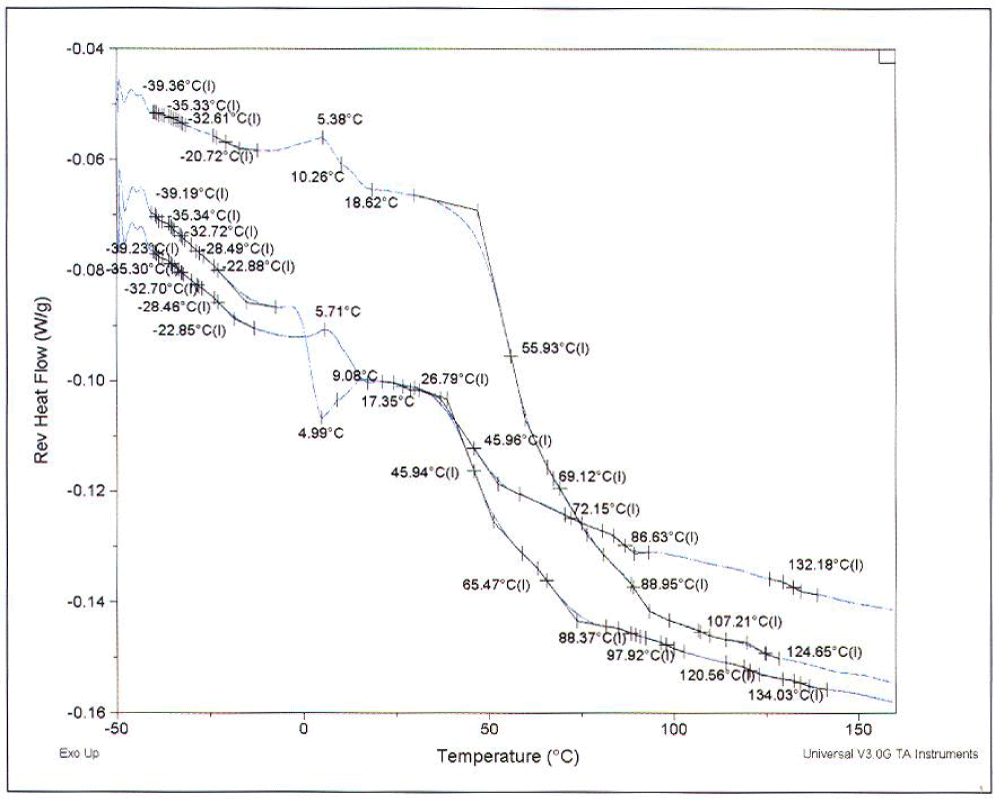


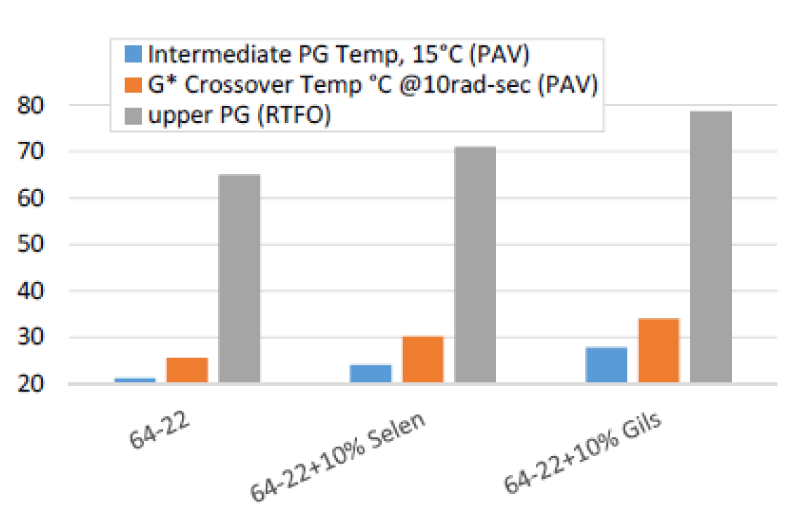
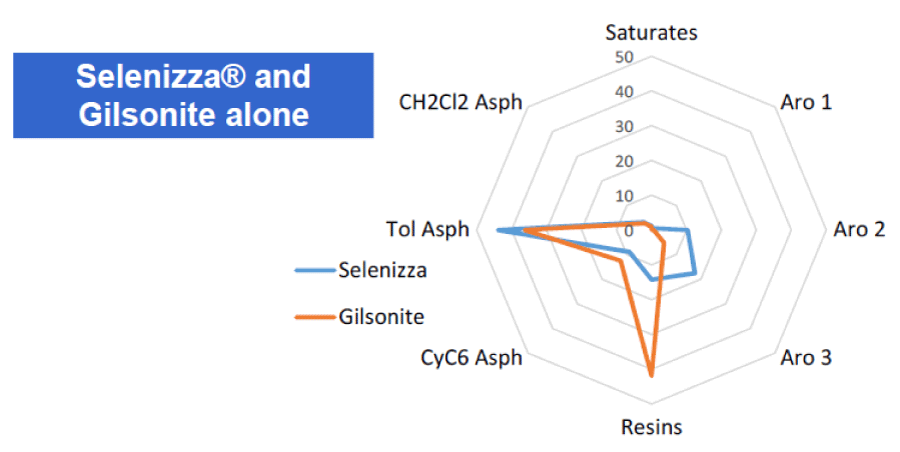
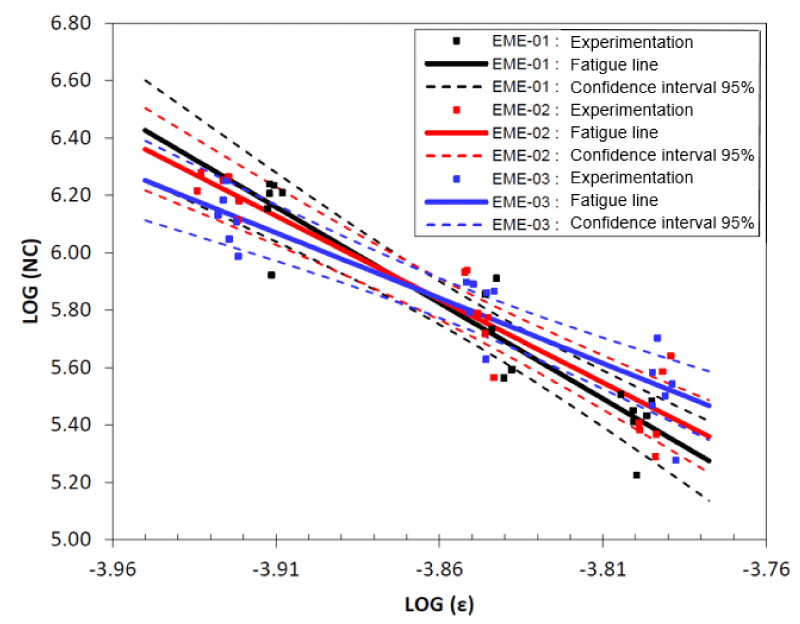
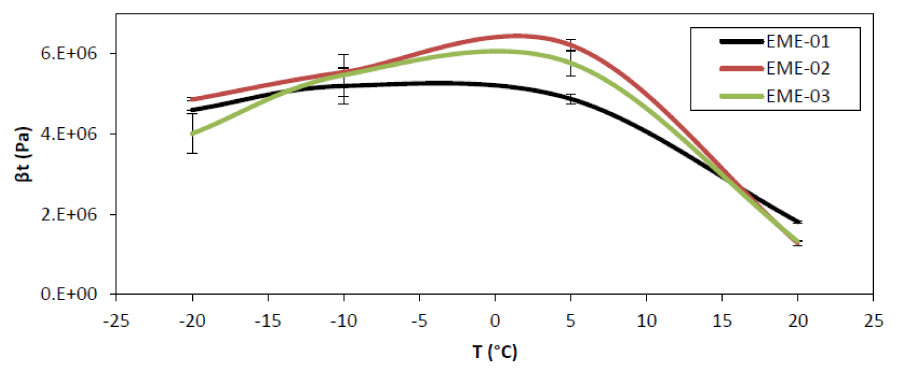
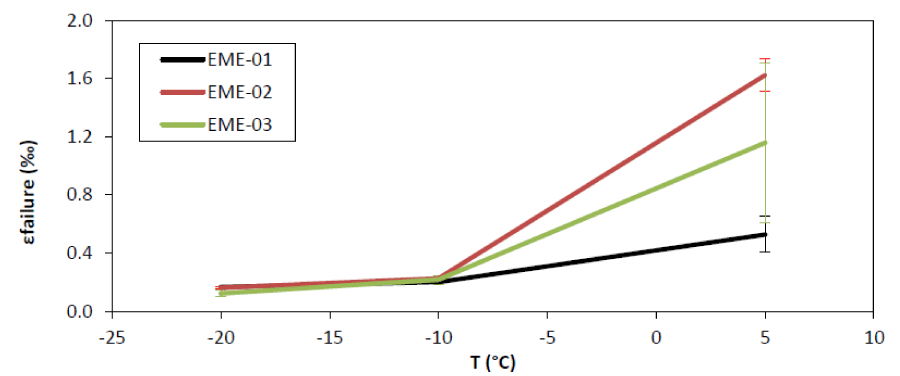
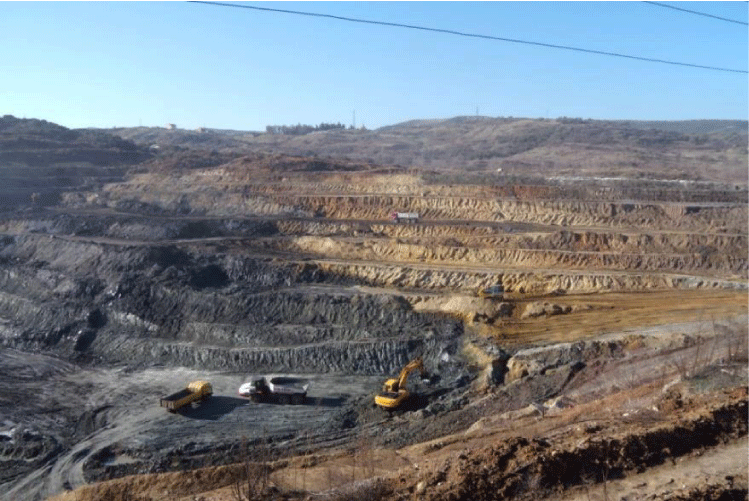

 Save to Mendeley
Save to Mendeley
